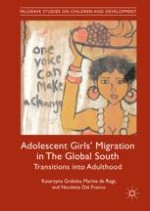This book provides a nuanced, complex, comparative analysis of adolescent girls’ migration and mobility in the Global South. The stories and the narratives of migrant girls collected in Bangladesh, Ethiopia and Sudan guide the readers in drawing the contours of their lives on the move, a complex, fluid scenario of choices, constraints, setbacks, risks, aspirations and experiences in which internal or international migration plays a pivotal role. The main argument of the book is that migration of adolescent girls intersects with other important transitions in their lives, such as those related to education, work, marriage and childbearing, and that this affects their transition into adulthood in various ways. While migration is sometimes negative, it can also offer girls new and better opportunities with positive implications for their future lives. The book explores also how concepts of adolescence and adulthood for girls are being transformed in the context of migration.
